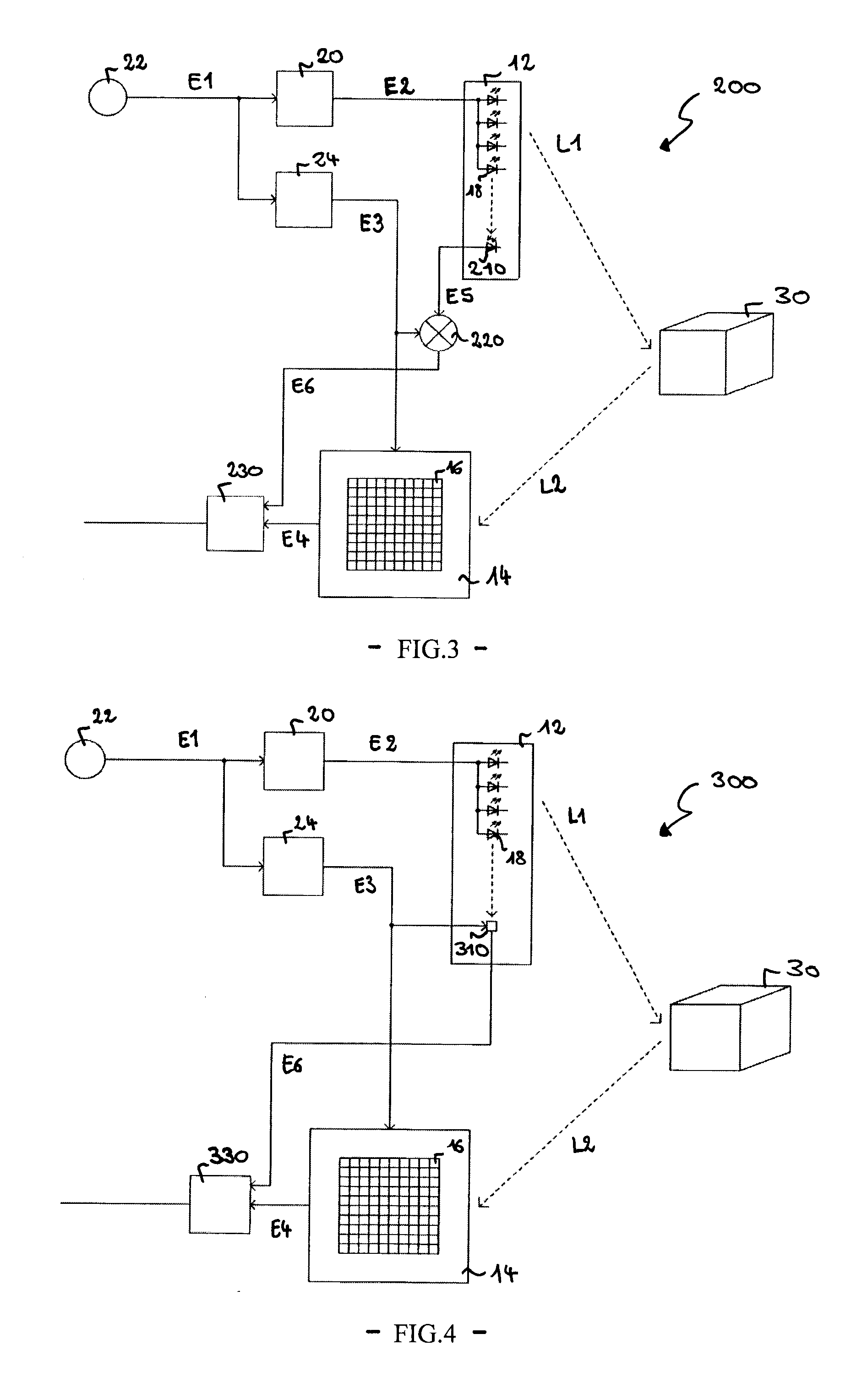3-D Imaging System
- Summary
- Abstract
- Description
- Claims
- Application Information
AI Technical Summary
Benefits of technology
Problems solved by technology
Method used
Image
Examples
first embodiment
[0025]FIG. 2 shows a 3-D imaging system 100 according to a A shunt resistor 110 is connected in series to the light emitting devices 18 of the illumination unit 12 and to a ground terminal. The shunt resistor 110 provides a voltage proportional to the illumination current through the light emitting devices 18. This voltage is fed as an electrical reference signal E5 to a mixer element 120. In order to maximize the correspondence between the electrical reference signal E5 and the absolute temporal behaviour of the light signal L1 (at the illumination unit 14), the resistor 110 is placed as close as possible to the light emitting devices 18, within the illumination unit 12. Inevitable propagation times can however be taken into account during final evaluation in an evaluation unit 130. The mixer element 120 has essentially the same properties, in particular essentially the same transfer function, as the individual sensor cells 16 of the imaging sensor 14 with the exception that the m...
second embodiment
[0026]A second embodiment is shown in FIG. 3. The 3-D imaging system 200 of FIG. 3 essentially corresponds to the system of FIG. 2. The major difference in the 3-D imaging system 200 resides in a different means for generating the electrical reference signal E5. As seen in FIG. 3, a photodiode 210 is mounted in the illumination unit 12 contiguous to the light emitting devices 18. The photodiode 210 directly derives the electric reference signal E5 from the emitted light signal L1 by photoelectric conversion. A mixer element 220 receives the output current of the photodiode 210 and the demodulation signal E3 at its input and provides a synchronization signal E6 at its output. Similar to the mixer element 120 of FIG. 2, the mixer element 220 is designed to imitate, together with the photodiode 210, the function of a sensor cell 16 of the imaging sensor 14. Other characteristics of the 3-D imaging system 200 are identical to those of the 3-D imaging system 100 described with respect to...
PUM
 Login to View More
Login to View More Abstract
Description
Claims
Application Information
 Login to View More
Login to View More - R&D
- Intellectual Property
- Life Sciences
- Materials
- Tech Scout
- Unparalleled Data Quality
- Higher Quality Content
- 60% Fewer Hallucinations
Browse by: Latest US Patents, China's latest patents, Technical Efficacy Thesaurus, Application Domain, Technology Topic, Popular Technical Reports.
© 2025 PatSnap. All rights reserved.Legal|Privacy policy|Modern Slavery Act Transparency Statement|Sitemap|About US| Contact US: help@patsnap.com



